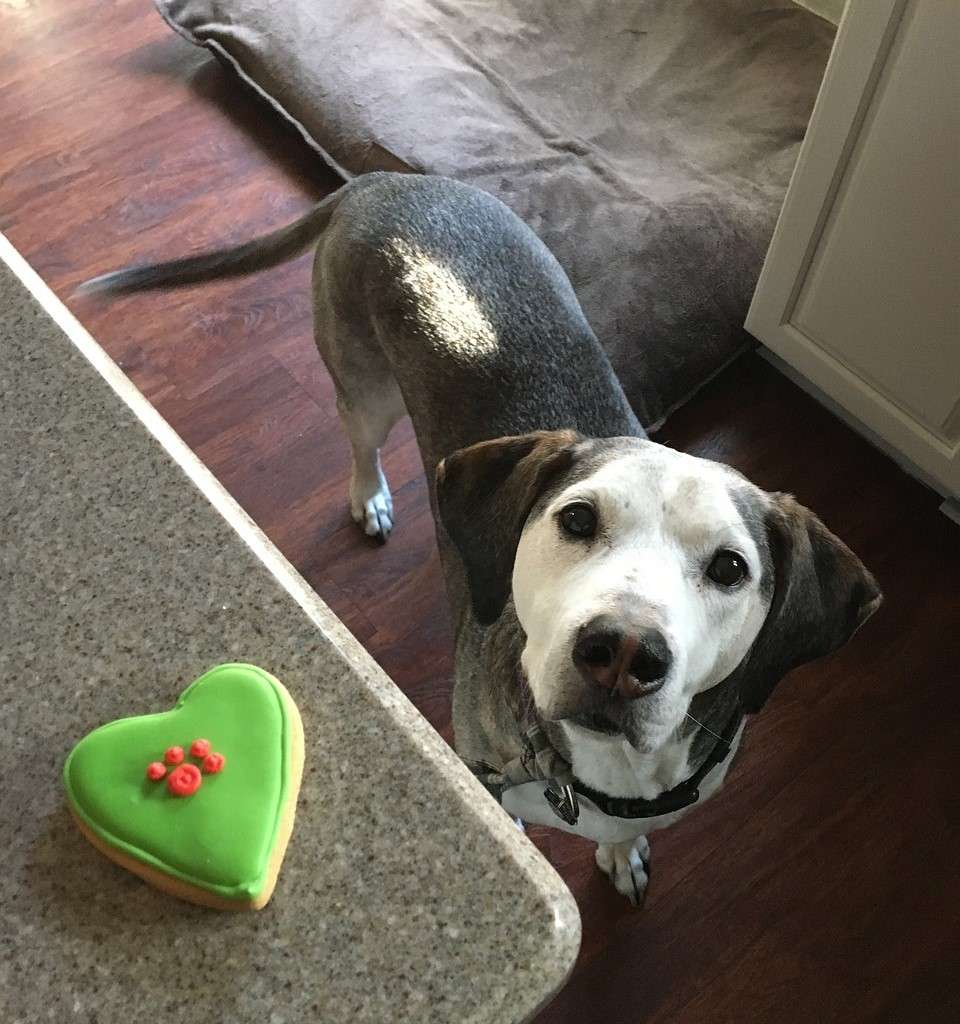Why Do Dogs Pee on Beds? Expert Insights and Step-by-Step Solutions for Pet Owners
We’ve all experienced the befuddlement and frustration of discovering our furry companions leaving an unwelcome surprise on our beloved beds. But why, oh why, do our dogs engage in this peculiar behavior? Fear not, fellow dog lovers, for we are about to embark on a journey of enlightenment!
In this comprehensive guide, we will delve into the depths of canine psychology and unravel the mysteries behind why our loyal companions sometimes choose our beds as their personal toilets. From the intricate workings of their instincts to the impact of medical factors and environmental influences, we shall leave no stone unturned in our quest for understanding.
So, fasten your seatbelts and prepare to be enlightened about the perplexing question: “Why do dogs pee on beds?”
The Canine Urinary System: An Overview

Ah, the intricate workings of a dog’s urinary system! To unravel the mystery of bed wetting, we must first familiarize ourselves with the fascinating anatomy and function of this essential bodily system. Deep within your pup lies a complex network of organs, including the kidneys, bladder, and urethra, which work harmoniously to regulate urine production and excretion.
Within this system, dogs maintain a normal pattern of urination, aligning with their biological instincts. Understanding these patterns is vital in deciphering why some dogs deviate from the norm and choose our cozy beds as their designated relief zone.
Furthermore, we explore common urinary issues that can disrupt this delicate balance, such as urinary tract infections, bladder stones, urinary incontinence, diabetes, and hormonal imbalances. By comprehending the intricacies of your dog’s urinary system, we can gain valuable insights into their bed-wetting behavior.
Normal Elimination Behavior in Dogs
As pet parents, we know that understanding our furry friends’ natural instincts is key to deciphering their behaviors. When it comes to elimination, dogs follow an instinctual pattern deeply rooted in their ancestry. In this segment, we embark on a journey to explore the normal elimination behavior of our canine companions.
- Marking versus urination: Dogs have a remarkable ability to communicate through scent, and marking is one way they stake their claim. It’s a way for them to leave their unique olfactory signature on various objects, including our beloved beds. However, urination, on the other hand, is the process of emptying their bladder, driven by their biological need for relief. By distinguishing between marking and urination, we can better understand why our furry friends sometimes choose our beds as their canvas.
- Preferred elimination sites: Canines possess a keen sense of smell, and they may have particular preferences when it comes to where they relieve themselves. From the grassy outdoors to the cozy confines of our beds, dogs may exhibit a range of preferences. We’ll explore the factors that contribute to their chosen elimination sites, shedding light on why beds sometimes become an unexpected target.
Potential Reasons Why Do Dogs Pee on Beds
Now that we’ve established a foundation of understanding regarding normal elimination behavior, it’s time to explore the intriguing world of why dogs pee on beds. In this section, we delve into a myriad of potential reasons that may contribute to this perplexing behavior.
- Medical causes: Sometimes, the culprit behind bed wetting can be an underlying medical issue. Dogs may experience urinary tract infections, bladder stones, urinary incontinence, diabetes, or hormonal imbalances, all of which can lead to inappropriate urination. By familiarizing ourselves with these medical causes, we can discern if a trip to the veterinarian is necessary to address our dog’s bed-wetting habits.
- Behavioral causes: Our canine companions are complex beings with emotions and unique behavioral traits. Submissive or excitement urination, anxiety and stress, territorial marking, lack of proper housetraining, and resource guarding are just a few of the behavioral causes that may trigger dogs to choose our beds as their personal relief stations. Understanding these behavioral nuances can empower us to implement effective strategies to address and manage these behaviors.
Stay tuned for the upcoming segments, where we will delve deeper into identifying the underlying causes of bed wetting and explore both medical interventions and behavioral management strategies. Our aim is to equip you with the knowledge and tools needed to help your furry friend overcome this curious habit and maintain a harmonious home environment.
Identifying the Underlying Cause
Now the detective work begins! Identifying the underlying cause of your dog’s bed-wetting behavior is crucial in devising an effective plan to address and manage it. In this segment, we explore various strategies to help you uncover the root cause behind your furry friend’s unusual bathroom preferences.
- Observing patterns and frequency: Becoming a keen observer is the first step. Take note of when and how often your dog chooses to relieve themselves on the bed. Are there any specific triggers or patterns you can identify? This valuable information can provide clues about potential causes and guide you in finding the most appropriate solutions.
- Consulting a veterinarian: When in doubt, seek the expertise of a veterinary professional. A thorough examination and specific tests can help rule out any underlying medical conditions that may be contributing to the bed-wetting behavior. By collaborating with your vet, you can narrow down the possibilities and move closer to a resolution.
- Behavioral assessments and professional help: Sometimes, unraveling the complexities of canine behavior requires the assistance of a professional. Certified trainers, animal behaviorists, or veterinary behaviorists can conduct comprehensive assessments to delve deeper into your dog’s behavioral patterns. Their expertise can shed light on any underlying anxieties, stressors, or training gaps that may be triggering the bed-wetting behavior.
- Keeping a urination diary: A valuable tool in your investigation toolkit, a urination diary allows you to track your dog’s bathroom habits meticulously. By recording the time, location, and any accompanying behavioral cues, you can detect patterns and correlations that may offer insight into the underlying cause. This diary can also serve as a useful reference when discussing your observations with your veterinarian or behavior professional.
Medical Intervention and Treatment Options
Once you’ve pinpointed the underlying cause of your dog’s bed-wetting behavior, it’s time to explore the medical intervention and treatment options available. Addressing any medical conditions or imbalances is essential in helping your furry friend find relief and regain control over their bladder.
- Veterinary examinations and tests: Your trusted veterinarian is your partner in your dog’s health journey. Through thorough examinations, they can assess your dog’s overall health and conduct specific tests to diagnose and treat any underlying medical issues. These tests may include urine analysis, blood work, imaging, or cultures, depending on the suspected cause.
- Medications and therapies: Depending on the diagnosis, your veterinarian may prescribe medications to alleviate symptoms or manage specific conditions. From antibiotics for urinary tract infections to hormone replacement therapy for hormonal imbalances, the appropriate medications can play a pivotal role in resolving bed-wetting issues. Additionally, therapies such as physical therapy or acupuncture may complement medical treatments, providing holistic care for your beloved pup.
- Lifestyle and dietary adjustments: Sometimes, small changes can yield significant results. Your veterinarian may recommend lifestyle modifications, such as increasing exercise, adjusting feeding schedules, or modifying the diet to support urinary health. These simple adjustments can positively impact your dog’s overall well-being and contribute to resolving bed-wetting behavior.
- Surgery and medical procedures: In more severe cases or when conservative measures prove ineffective, surgical interventions or medical procedures may be necessary. Surgical options can address conditions like bladder stones or anatomical abnormalities that contribute to bed wetting. Your veterinarian will guide you through the potential benefits, risks, and expected outcomes of such interventions.
Behavioral Management Strategies

Addressing the behavioral aspect of your dog’s bed-wetting behavior is key to achieving long-term success. In this segment, we explore effective strategies to manage and modify your furry friend’s behavior, promoting proper elimination habits and reducing the likelihood of accidents on your bed.
- Reinforcing housetraining: Revisiting the basics of housetraining can be beneficial for dogs exhibiting inappropriate elimination behaviors. Reinforce positive reinforcement techniques, such as rewarding your dog for using designated elimination areas and providing consistent praise for desired behaviors. Patience and consistency are paramount during this process, ensuring your dog understands the appropriate places to relieve themselves.
- Positive reinforcement and rewards: Dogs respond exceptionally well to positive reinforcement. Utilize treats, verbal praise, and affection to reward your dog when they demonstrate desired behaviors, such as using the designated elimination areas or showing improved bladder control. Consistently reinforcing these positive behaviors can help reshape their habits and strengthen the bond between you and your furry companion.
- Establishing routines and consistency: Dogs thrive on routine and predictability. Establish a consistent daily routine that includes regular bathroom breaks, feeding times, and exercise sessions. Consistency helps your dog anticipate and meet their elimination needs, reducing the likelihood of accidents on your bed. By sticking to a schedule, you create an environment that fosters proper elimination habits.
- Addressing anxiety and stress: Emotional factors can contribute to bed-wetting behavior. Dogs experiencing anxiety or stress may be more prone to accidents. Identify potential triggers and sources of stress in your dog’s environment and work to alleviate them. Techniques such as desensitization, counterconditioning, and the use of calming aids can help your furry friend feel more at ease and reduce the occurrence of bed wetting.
- Environmental enrichment and mental stimulation: Keeping your dog mentally and physically stimulated can significantly reduce their stress levels and promote overall well-being. Provide interactive toys, engage in regular play sessions, and consider puzzle toys that encourage mental engagement. A stimulated and content dog is less likely to engage in destructive or inappropriate elimination behaviors.
Preventing Dogs from Peeing on Beds
As the saying goes, prevention is always better than cure. In this segment, we delve into effective measures to prevent dogs from peeing on beds, creating a harmonious and accident-free environment for both you and your furry friend.
- Crating and confinement: When you’re unable to supervise your dog, confining them in a properly sized crate can be a valuable tool. Dogs naturally avoid soiling their living spaces, making a crate an excellent choice for preventing accidents on beds. Ensure the crate is comfortable, safe, and enticing with cozy bedding and chew toys to keep your dog content.
- Bed and furniture barriers: Physical barriers can serve as a visual reminder to deter your dog from accessing your bed. Use baby gates or closed doors to restrict access to your bedroom, or invest in pet-friendly barriers specifically designed to keep dogs off furniture. These barriers create boundaries and reinforce the concept of designated areas for elimination.
- Regular exercise and walks: A tired dog is a happy dog. Ensure your furry friend receives regular exercise, including walks, playtime, and mental stimulation. Physical activity not only supports overall health but also helps regulate your dog’s bladder and reduce the urge to urinate frequently, decreasing the likelihood of accidents on your bed.
- Adequate bathroom breaks: Maintain a consistent bathroom schedule, ensuring your dog has ample opportunities to relieve themselves in appropriate areas. Aim for frequent bathroom breaks, especially after meals, naps, play sessions, or waking up in the morning. By providing regular opportunities, you minimize the chance of your dog seeking alternative relief spots, such as your bed.
- Professional training and socialization: Enlisting the help of a professional dog trainer or behaviorist can be invaluable in addressing bed-wetting behaviors. These experts can provide tailored guidance, training techniques, and behavioral modification plans specific to your dog’s needs. Additionally, socialization with other dogs and exposure to various environments can help build your dog’s confidence, reducing anxiety-related bed wetting.
By implementing these behavioral management strategies and preventive measures, you can create an environment that supports proper elimination habits and significantly reduces the likelihood of your dog peeing on beds. Stay tuned for the next segment, where we discuss effective cleaning and odor removal techniques to restore your bed’s pristine condition.
Cleaning and Odor Removal
Accidents happen, and when your dog pees on your bed, it’s essential to address the situation promptly and effectively. In this segment, we explore techniques and products for cleaning and odor removal, ensuring your bed is fresh and free from lingering scents.
- Immediate cleanup techniques: Time is of the essence when it comes to cleaning up accidents. Blot the affected area with absorbent towels or paper towels to soak up as much urine as possible. Avoid rubbing, as it can spread the stain and odor. Once the excess urine is absorbed, use a mild detergent or enzymatic cleaner specifically designed for pet stains to treat the affected area.
- Effective cleaning products: Investing in high-quality cleaning products can make a significant difference in eliminating stains and odors. Look for enzymatic cleaners or those labeled as pet-specific, as they contain special enzymes that break down the urine components, effectively eliminating the odor. Follow the instructions provided by the manufacturer for best results.
- Eliminating lingering odors: Dogs have an exceptional sense of smell, and if any residual odor remains, they may be tempted to re-mark the area. To combat lingering odors, consider using odor neutralizers or natural remedies like vinegar or baking soda. These substances can help neutralize the odor and discourage your dog from revisiting the spot.
Remember, it’s crucial to clean not only the surface but also the underlying layers, including mattress pads or covers, if applicable. Follow the manufacturer’s instructions for cleaning these items to ensure thorough elimination of stains and odors.
When to Seek Professional Help

While many cases of bed wetting can be addressed through behavioral management and preventive measures, there are instances where professional help is necessary. In this final segment, we discuss situations when seeking assistance from professionals is warranted.
- Persistent or severe urination issues: If your dog continues to exhibit bed-wetting behavior despite your best efforts, it may be time to consult a veterinarian or a veterinary behaviorist. They can conduct a thorough examination, review your dog’s medical history, and recommend further diagnostics or specialized treatment plans to address the underlying cause.
- Aggressive or destructive behavior: In some cases, bed wetting may be accompanied by aggression or destructive behavior. These behaviors can pose risks to both your dog and household members. Seeking professional help from a certified dog trainer or behaviorist can provide guidance on managing and modifying these behaviors, promoting a safe and harmonious environment.
- Difficulty in housetraining: If your dog struggles with housetraining or fails to respond to traditional training techniques, professional assistance can be beneficial. Trainers or behaviorists can assess your dog’s specific needs, tailor training programs, and provide hands-on guidance to address housetraining challenges effectively.
- Drastic changes in behavior or health: If your dog’s bed-wetting behavior is accompanied by significant changes in behavior, such as increased anxiety, aggression, or changes in appetite or energy levels, it’s essential to consult a veterinarian. These changes may indicate underlying medical conditions or behavioral issues that require professional attention.
Remember, professional help is available, and seeking it can provide valuable insights and solutions to address your dog’s bed-wetting behavior effectively. The expertise and guidance of trained professionals can help you navigate complex situations and ensure the well-being of your beloved canine companion.
Conclusion
Understanding and addressing the behavior of why do dogs pee on beds is essential for pet owners seeking a harmonious living environment. By exploring the factors contributing to this behavior and implementing effective strategies, we can overcome this challenge and create a comfortable space for both dogs and their human companions.
Throughout this guide, we have discovered that medical causes such as urinary tract infections and behavioral factors like anxiety or marking can lead to bed wetting. Identifying the underlying cause is crucial in finding appropriate solutions.
Implementing behavioral management strategies, such as reinforcing housetraining, positive reinforcement, and establishing consistent routines, can help reshape your dog’s habits. Preventive measures like crating, barriers, regular exercise, and professional training also play a significant role in preventing bed wetting incidents.
When bed wetting persists or worsens, seeking professional help is advised. Veterinarians can diagnose and treat underlying medical conditions, while certified trainers or behaviorists offer specialized insights and guidance to address behavioral issues. With patience, consistency, and a deep bond with our furry friends, we can overcome this challenge and enjoy a blissful coexistence.
Frequently Asked Questions
Why do dogs pee on beds?
Dogs may pee on beds due to various reasons, including medical issues like urinary tract infections or behavioral factors such as anxiety, marking territory, or incomplete housetraining. Understanding the underlying cause is crucial in addressing this behavior effectively.
How can I prevent my dog from peeing on beds?
Preventing dogs from peeing on beds involves a combination of strategies. Establishing consistent housetraining routines, using positive reinforcement, providing regular bathroom breaks, and creating physical barriers like bed and furniture barriers can help deter this behavior. Consulting with professionals, such as trainers or behaviorists, can also provide valuable insights and guidance.
Should I punish my dog if they pee on the bed?
Punishment is not recommended as a method to address bed wetting. Dogs may not understand the connection between punishment and the act of peeing on the bed, which can lead to confusion and anxiety. Instead, focus on positive reinforcement, consistency, and addressing any underlying medical or behavioral issues.
Can medical conditions contribute to dogs peeing on beds?
Yes, certain medical conditions like urinary tract infections, bladder stones, urinary incontinence, diabetes, or hormonal imbalances can contribute to dogs peeing on beds. It’s important to consult with a veterinarian to rule out any underlying medical issues and receive appropriate treatment.
When should I seek professional help for my dog’s bed-wetting behavior?
It’s advisable to seek professional help if the bed-wetting behavior persists, worsens, or is accompanied by other concerning behaviors like aggression or drastic changes in behavior or health. Veterinary professionals, trainers, or behaviorists can provide specialized guidance and develop tailored plans to address your dog’s specific needs.
How can I effectively clean and remove odors from my bed after a dog has peed on it?
Immediate cleanup is essential. Blot the area, use mild detergents or enzymatic cleaners specifically designed for pet stains, and neutralize lingering odors with odor neutralizers or natural remedies like vinegar or baking soda. Follow product instructions and consider professional cleaning services for more thorough cleaning, especially for mattresses or bedding.
Please note that while these answers provide general information, consulting with a veterinarian or a qualified professional is recommended for personalized advice and guidance based on your dog’s specific circumstances.




